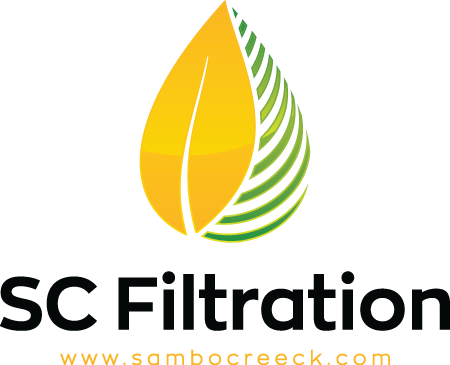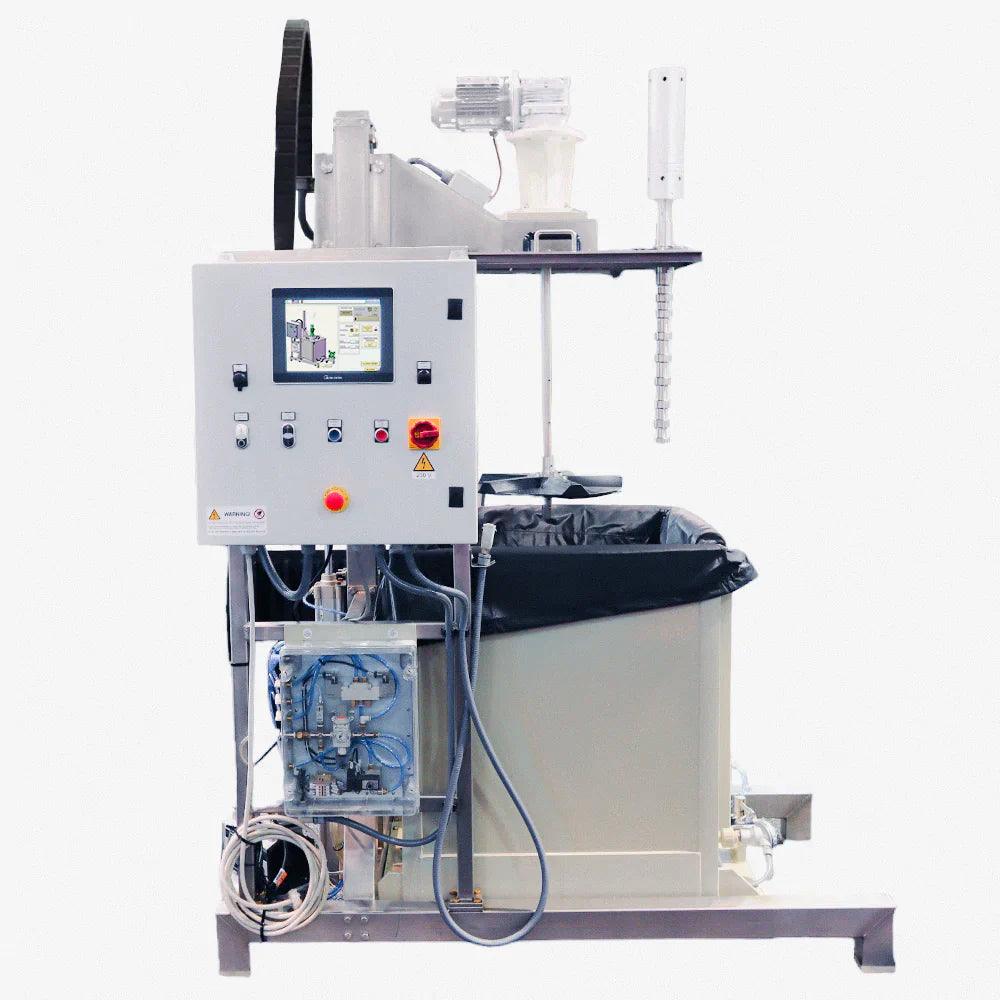Mesclatore Solventless
What is the footprint of the Mesclatore? What size room do you recommend?
The system is 64” L x 48” W x 92” H, and individually the trolleys are 41” L x 31.5” W x 41” H.
The minimum space we recommend for operating the system, not including other ancillaries, is 160” L x 80” W.
How many pounds can you wash per batch?
If dry trim, 6-8 pounds (3.6kg).
If fresh frozen flower, 44 pounds (20kg) if making a food grade product.
Full Melt's recommended maximum is 22 pounds (10kg).
These are real numbers and not marketing fluff.
How much time does a typical batch take to wash?
Between 45 minutes and 90 minutes, depending on SOP.
How much biomass can you wash in a shift?
This varies considerably based on SOP. Typically, 6-8 batches can be washed per shift. That means as much as 64 pounds of dry trim and 125 pounds of Full Melt Fresh frozen.
What are the yields on the Mesclatore VS other methods or equipment?
Yields are cultivar dependent. The next most important factor is the supply chain and handling of biomass. All things being equal, in some cases, we found the Mesclatore to yield as much as double what hand wash methods yield. This can be attributed to employee fatigue (but possibly other variables as well, all difficult to measure). We usually saw this happen during night shifts with less supervision. Automation removes this variable from the equation without sacrificing quality.
Compared to competitors, we tested the LowTemp Osprey and consistently had 8% higher Yields to rosin. Icextracts, Hashatron and Hashtek, seem to have higher yields to dry hash but not to rosin. This is likely due to the extraction of contaminants and stalks that don’t report when pressing for rosin. We have not tested other systems at the time of writing this article.
How are yields calculated, and what is the most important metric?
Yield is calculated as the weight of dry hash in relation to the feed. This means that if 10,000 grams of fresh frozen flower produced 300 grams of dry hash, the yield is 3%.
However, because contaminants such as particulate and stalks can inflate this number, yielding to pressed rosin is more accurate. Contaminants do not add value to the hash or rosin, just volume or weight to the hash. When pressing for rosin, never does the rosin weight equal to the hash weight. Pressing is both an extraction process and a filtration process. Yield to rosin is a better metric as it mainly eliminates contaminants from the hash. This is why you may see a 70% yield when pressing to rosin, meaning that 30% of the hash likely was stalks or other contaminants.
Therefore, if the final rosin weight is 210 grams, the actual yield from the 10,000 grams of biomass was 2.1% and not 3%, as previously suggested. The lost 90 grams were mostly contaminants and stalks.
Why is water quality important?
Water is the extraction medium, both chemically and mechanically. Chemically it extracts terpenes, anthocyanins, and other impurities from the flower. Water is also essential in the mechanical separation of trichomes by creating the conditions for shear to assist in decapitating trichomes. PH, Temperature, and Osmolality of water play critical roles in the process and thus should be monitored and optimized to avoid damaging trichomes. The viscosity of water plays a critical role in decapitation and the power requirements of the agitator. Water is the common factor in all these variables, so understanding its behavior is critical to the process.
What impeller do you use, and why did you decide to use that type?
We use a pulsator similar to that used on a modern washing machine. This agitator class has low shear and, thus, less potential to damage biomass. Our design is the product of many computer simulations using Computational Fluid Dynamics, Discrete Element Method simulations, laboratory scale tests, and many pilot plant iterations. We did our homework.
Our agitator is engineered to push water up the tank walls to agitate the floating biomass without pulling the biomass too far down and risking contact with the agitator. Simultaneously, it pushes trichomes down into the tank's false bottom so they can safely exit the system.
Do you use ice with this system?
Ice usage is up to the customer. Some applications do well with ice, some not so much. We discourage heavy use of ice in general due to the risk of shear. It is important to note that our vessels are an insulating material and incredibly energy efficient, reducing the need for ice or energy usage. For customers that prefer not to use ice, we have found the most efficient way to chill water is using a chiller and a heat exchanger. Our equipment is designed to conform to your SOP, not vice versa.
Can you put the trolleys in a walk-in freezer?
Yes. The trolleys do well under extreme cold, and we encourage taking the trolley to your freezer and loading biomass. This saves time instead of lugging biomass to the trolley.
What are your favorite features of the Mesclatore?
My favorites are the ergonomics and ease of use. For a user, having a system designed to be easy on your back and simple to operate is essential. This was our primary design consideration so you won't find stepladders in our equipment.
My second favorite feature is the PLC which makes the operation efficient. This equipment is for a business at the end of the day, so we need to increase productivity, reduce costs, and improve the quality of our products to command a markup at the retail level. One way we achieve this is through intuitive programming that makes repeatability simple.
What features does the PLC have?
Our PLC allows you to make recipes that regulate agitator speed, direction, and cycle time. It also logs wash parameters for analysis and compliance.
How many people are required to operate the Mesclatore?
Though one person can operate the Mesclatore, we prefer two people. If using more than two trolleys, we recommend one person per trolley so that a 3-trolley system would have three operators. There are lots of automation that make using these machines effortless; however, there is so much going on in a hash lab that washing is only one aspect of the operation that needs attention.
How do you empty the vessels?
Our preferred method is using tank bags that can easily be hoisted out. The trolley is taken to the cleanup area, where an inexpensive shop hoist raises the heavy biomass out of the tank. The zipper on the bag allows the hanging bag to be cleaned out and biomass to be disposed of in a waste bin.
What material are the trolleys made of?
Our trolleys are made of PPH Plastic supplied by German manufacturers Simona and Bayer.
Why use plastics?
Plastics are the preferred material for processing trichomes as the thermal stability prevents trichomes from sticking. Metal warms quickly and is less forgiving. Plastics are thermal insulators making the system energy efficient and reducing operating costs.
Why a top agitator?
An agitation system's PLC/Motor portion is typically the most expensive part. Separating the tank from the agitator allows us to add extra tanks. Since much of the trichome extraction process involves time-consuming processes like loading, filling, soaking, draining, emptying, and cleaning, removing the tank from the agitator can maximize the agitator's utilization to increase production.
What add-ons are available for your system?
We have many options to increase efficiency, including:
- Trichome-Safe pumps
- Ultrasonic Assisted Extraction
- Recirculating Sieves
- Spectrometers


